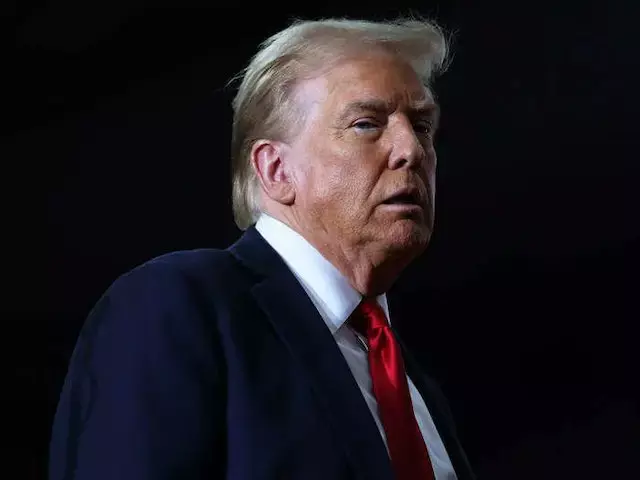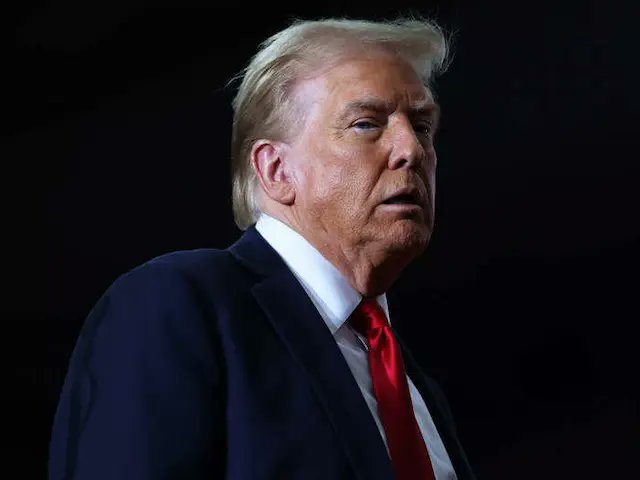
The stunning victory of Donald Trump has sharpened focus on America’s relationship with its only peer competitor, China.
Eight years ago, Mr Trump had identified China as America’s primary threat and had acted to curb its economic rise. He did this by attempting to deny China market access to the United States, through tariffs. This was to some extent successful and the tariffs were continued by Mr Trump’s successor Joe Biden.
Mexico became America’s largest trading partner this year, eclipsing China, which had held the position for a decade. Of course, much of Mexico’s exports to the US were initially from China so it is unclear what the actual damage to China has been. Mr Biden also took the next step towards trying to handicap China’s growth by denying it access to the most advanced microchips and the machinery used to design them. This was explained as a move that was aimed at China’s military capability but the real reason is economic. China responded by starting its own development of these goods and experts claim it is only a few years behind and will at some point catch up.
China is by far the global leader in electric vehicles and clean energy, including solar panels. Meaning its products are priced competitively and often better in quality than what is made in Europe and the US. Tesla owner Elon Musk says that the cars produced by his Chinese plant are the best the company makes. But even Chinese-designed cars by local brands in China are thought to have caught up with the best the world has to offer and at a cheaper price.
America is stuck with what they call gas cars and trucks, which are powered by petrol and are a sunset industry. The only way for Ame-rican giants like Ford and General Motors to not only compete today but to survive is by blocking Chinese cars through tariffs and other barriers.
This likely will not go on for much longer, for two reasons. The first is consumer interest and denying people cheaper alternatives for strategic reasons is not going to be popular. And the other, of course, is the fact that electric vehicles are the future, and even if they are not mandated will replace those running on petrol.
China is now two-thirds the size of the US economy ($18 trillion to $26 trillion) and the same size as the economy of the entire European Union. In the next 10 years, China will come close to equalling the US. No other nation has done that or come close to doing it. Before it collapsed, the Soviet Union was a fourth the size of the US economy. But that was a very different time and the Russians never had the dominance of China in key sectors. China is the world’s largest manufacturer and makes one-third of all goods worldwide.
This has happened though Chinese wages have grown multiple times in the last decade and a half. For several years now, it has not been cheap labour that has powered Chinese exports.
China’s growth has slowed since the Covid-19 pandemic, but a slow China is still formidable. It is growing at twice the rate of the United States and, based on the latest numbers out on November 29, at the same rate as India though it has an economy which is five times larger.
It will not be easy for the United States to stop it from rising further and, given the pace at which China has boomed, the moment of reckoning will be upon us perhaps inside of this decade itself.
This is the primary question and the main issue in geopolitics today: what can the US do to stop China from equalling it? If there is not much, then what happens to the world once China becomes the equal of the US, and soon after, the largest power on earth? We will find out the answer to both.
On many key issues, things will likely shift. For one, America and its allies will be less capable of doing what they have done across the world over the past few decades. China claims it is non-interventionist, and perhaps it will turn out to be that way, but then again China has never been the dominant power in a connected world.
For us Indians, unfortunately, though we are the world’s largest nation, our role here is limited. We are onlookers as we have not managed to do what China has. In 1990, India and China were together with economies the same size in per capita GDP (World Bank data in fact says that India was marginally ahead). Three and a half decades of “liberalisation” and one decade under the genius of Narendra Modi has not produced any shift. China’s per capita GDP was $7,600 in 2014; ours was $1,559. A decade later they are at $12,614 and we at $2,400.
In any case, we no longer have the ambition to rival China save through words. Across the landscape of geopolitics, there is as much reference to India as there might be to, say, Britain or France. Both spent powers and neither especially relevant in the meaningful sense. India is similar. This is a shame for a nation with so much potential and for which there had been so much hope only a few years ago.
On the other hand, of course, we are happy to be fighting ourselves and digging up disputes from centuries ago as a substitute for real development. The present and the future can wait while we will fix the past.
